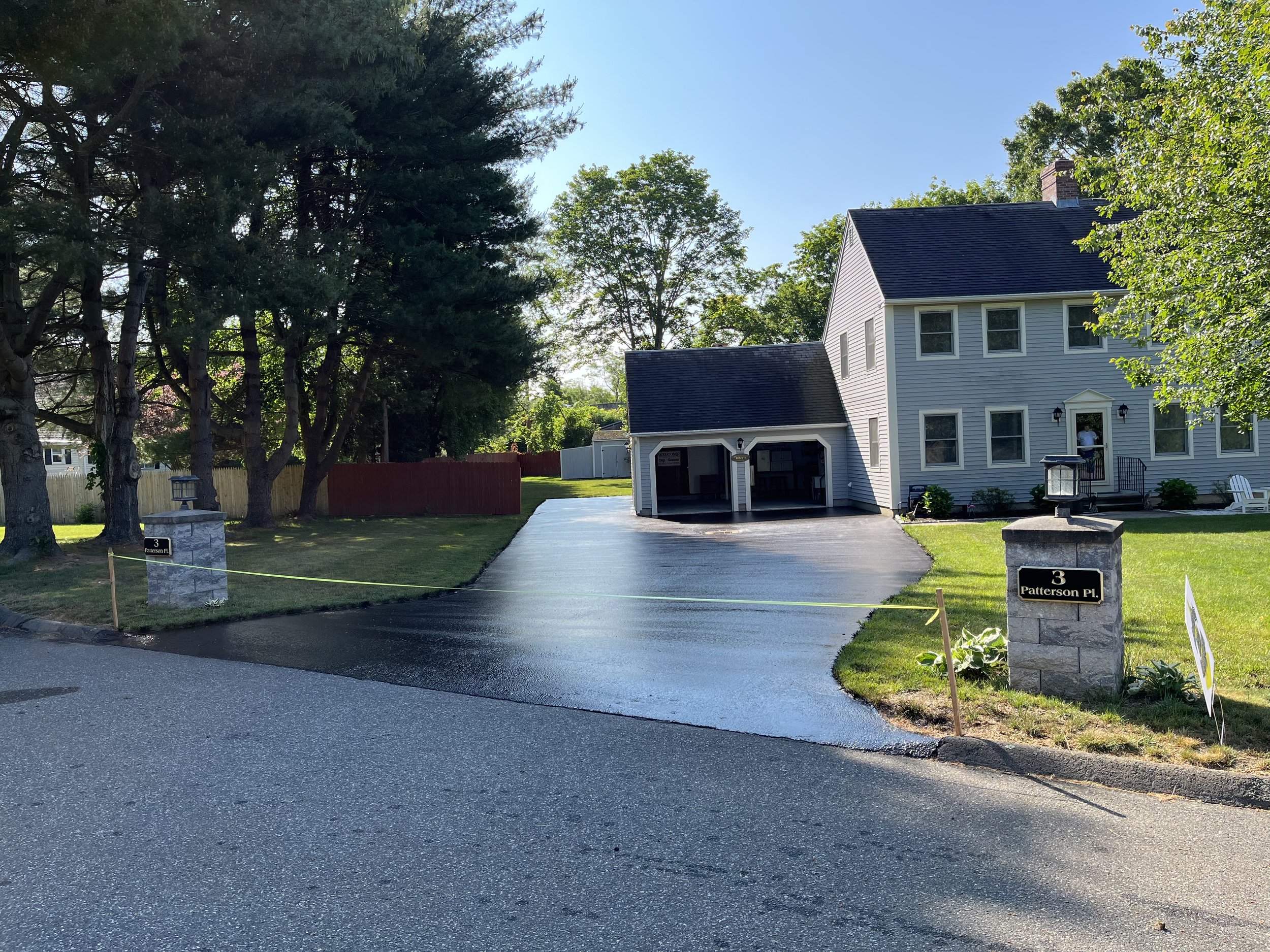Swift Solutions for Asphalt Patch Repair: Optimum Sealing Strategies
Swift Solutions for Asphalt Patch Repair: Optimum Sealing Strategies
Blog Article
Cold Mix Asphalt Vs. Hot Mix Asphalt: Which Is Right for You?

Make-up Distinctions
Cold mix and warm mix asphalts vary dramatically in their structure, with distinct characteristics that affect their efficiency and applications. Cold mix asphalt is generated by emulsifying the asphalt binder with water and an emulsifying agent before blending it with accumulation. This approach permits the asphalt to be convenient at lower temperature levels, making it excellent for temporary fixings and for usage in cooler weather. Hot mix asphalt, on the other hand, is made at high temperature levels, usually in between 300-350 ° F, which helps to achieve far better compaction and a much more durable end product. The warm mix asphalt manufacturing process involves warming the aggregate and asphalt binder individually prior to combining them at the asphalt plant.
Furthermore, cool mix asphalt has a tendency to be less thick and much more versatile than hot mix asphalt. This adaptability makes it better fit for areas with greater degrees of motion, such as driveways or roadways with rush hour. In comparison, warm mix asphalt is understood for its high sturdiness and resistance to rutting and fracturing, making it a favored choice for freeways and high-traffic roads where longevity is crucial.
Installment Refine Variations
The process of mounting chilly mix and warm mix asphalt displays remarkable variations in their demands and treatments. In contrast, hot mix asphalt requires an extra elaborate installment process. Due to the heating demands, warm mix asphalt setups are usually brought out by professionals with specific equipment, making sure an extra long-term and structurally sound result.
Toughness and Longevity Variables
When thinking about asphalt choices, sturdiness and longevity are crucial factors to review for lasting sidewalk performance. Hot mix asphalt (HMA) is understood for its remarkable longevity and longevity.
In regards to longevity, HMA normally outshines CMA due to its premium toughness and resistance homes. HMA sidewalks have a longer service life, requiring much less regular repair work and maintenance, which can convert to cost savings in the future. Additionally, HMA sidewalks are extra conveniently customizable to meet specific task demands, even more boosting their resilience.
Cost Considerations
Thinking about the financial ramifications is a vital element when assessing the selection between hot mix asphalt (HMA) and cold mix asphalt (CMA) for sidewalk projects. While the preliminary expense of hot mix asphalt is commonly greater than that of cold mix asphalt, HMA usually gives a much more affordable option in the future as a result of its superior durability and long life. HMA is known for its capability to stand up to heavy traffic tons and harsh weather, lowering the need for frequent repairs and upkeep. On the various other hand, chilly mix asphalt is more economical ahead of time but might require even more frequent patching and resurfacing, leading to greater maintenance prices gradually.
In addition to material expenses, it's crucial to consider the More Bonuses costs associated with setup and upkeep when comparing HMA and CMA. Inevitably, the choice in between HMA and CMA should take into account not simply the preliminary cost however also the long-term financial ramifications to figure out the most cost-effective alternative for the particular pavement job.
Environmental Influence Contrast
Comparison of the ecological impacts between hot mix asphalt (HMA) and cold mix asphalt (CMA) exposes distinct differences in sustainability practices. HMA production requires heats, resulting in enhanced power usage and greenhouse gas discharges. The procedure likewise launches unpredictable natural compounds (VOCs) and hazardous air pollutants (HAPs) into the atmosphere. In contrast, CMA is produced and applied at lower temperature levels, lowering energy usage and discharges significantly. The lower manufacturing temperatures of CMA cause decreased fuel intake and lower degrees of carbon dioxide emissions, making it a much more eco-friendly choice.
Furthermore, making use of CMA often involves recycling existing asphalt pavement, advertising resource conservation and lowering the amount of waste sent out to landfills. This reusing facet anonymous even more improves the sustainability of CMA compared to HMA. On the whole, when thinking about the environmental influence, CMA arises as an extra eco lasting selection due to its lower energy needs, reduced discharges, and the capacity for reusing existing materials. By going with CMA over HMA, roadway building jobs can add favorably to ecological conservation efforts.
Conclusion
Finally, the choice between cold mix asphalt (CMA) and warm mix asphalt (HMA) depends on numerous factors such as composition, installation process, durability, durability, expense, and environmental effect. asphalt patch repair. While CMA uses a quick and affordable remedy for small fixings, HMA ensures superior longevity and longevity for heavy web traffic areas. Consider these elements very carefully to determine which sort of asphalt is the right option for your paving needs

Taking visit this site right here into consideration the financial effects is a critical facet when examining the selection between warm mix asphalt (HMA) and cold mix asphalt (CMA) for sidewalk tasks. While the preliminary expense of hot mix asphalt is commonly greater than that of chilly mix asphalt, HMA frequently provides a much more cost-effective solution in the long run due to its remarkable sturdiness and longevity. cold mix asphalt.Contrast of the environmental impacts between hot mix asphalt (HMA) and chilly mix asphalt (CMA) reveals distinct distinctions in sustainability methods.In final thought, the choice in between cool mix asphalt (CMA) and warm mix asphalt (HMA) depends on different aspects such as structure, setup process, resilience, long life, expense, and ecological impact
Report this page